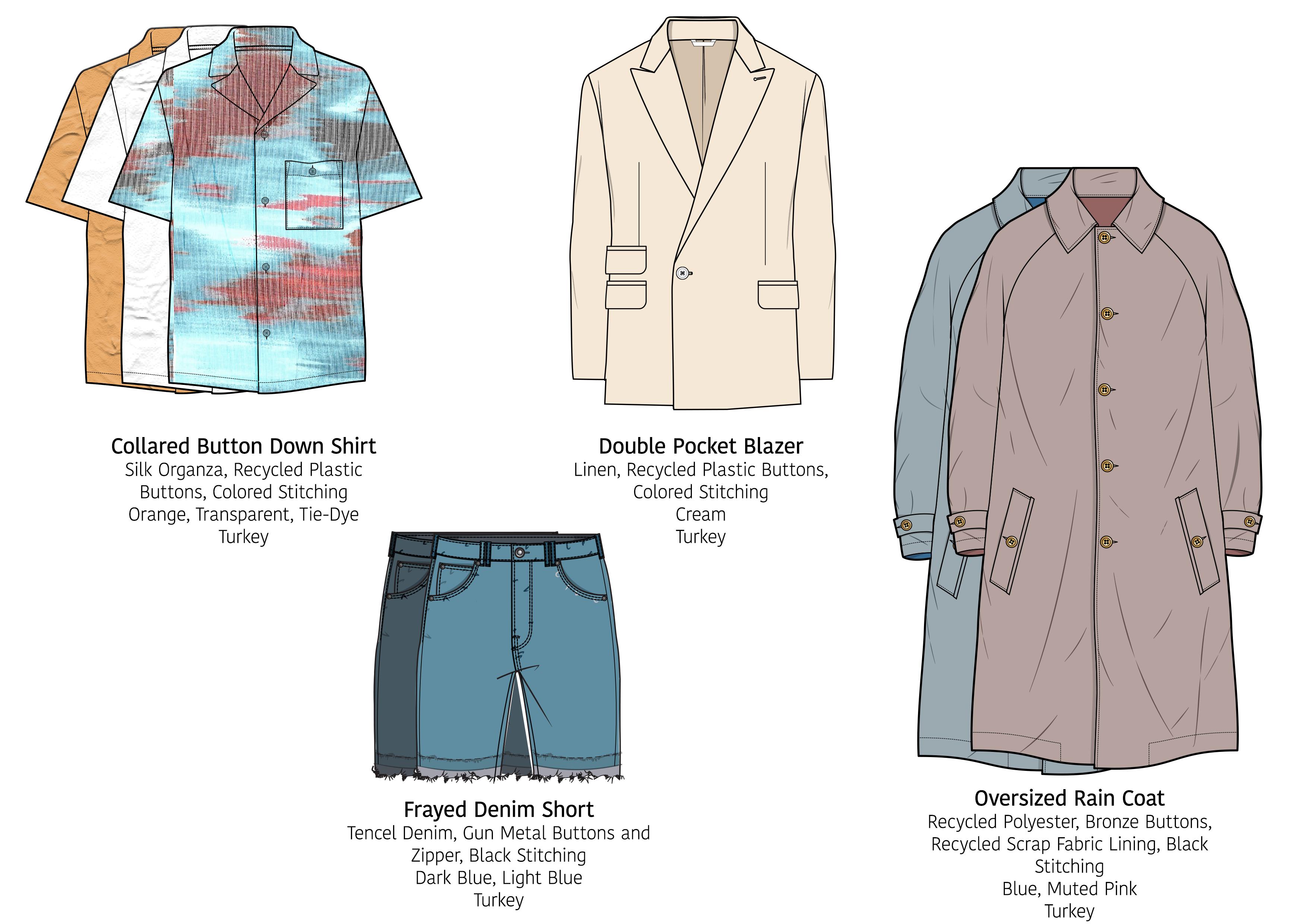
1 minute read
IV. Range Structure
Core Range
Fashion Range
Advertisement

High Fashion Range

Range Plan Analysis
Mango’s contemporary Mediterranean designs are preserved through this menswear range with sustainability and transparency as the greatest priority (Berg et al, 2019). The range uses sustainable fabrics of organic and recycled origins that can be broken down into fibers for new garments. The collection has a minimal number of products that can be purchased either through a preorder or through the store but with limited quantities. This is to minimize mass production and consumption of clothing.
This S/S 21 capsule collection for Mango’s menswear includes a product mix of core, fashion, and high fashion pieces with diferent pricing strategies. The core range includes basic silhouettes like t-shirts, sweaters, sweatshirts, and denim jeans and jackets. What also makes these items “core” is the fabric selection; organic cotton, bamboo and rayon jersey and Tencel denim are pretty standard when sourcing sustainable textiles. This collection is meant to appeal to the older Generation Z and the younger Millennial, so the fashion and high fashion range have more trendy designs and silhouettes that are not necessarily for every shopper, like the denim shorts, transparent button-down shirt, or the two-toned suit. In addition, the textiles used in the fashion and high fashion ranges like silk organza, linen, and organic cotton twill are not as common as the core fabrics used.
All of these factors also lead to diferent pricing strategies with the core as entry, fashion as mid, and high fashion as exit price points. Comparing similar items from Mango’s past collections and their price points (See Figure 4.1), considering the target customer’s income (CACI, 2014), and the sourcing of each fabric (See Figure 4.2), leads to the good-better-best pricing strategy to the core, fashion, and high fashion ranges, respectively.

Figure 4.2: Sourcing for Diferent Countries (Re:source, n.d.)







